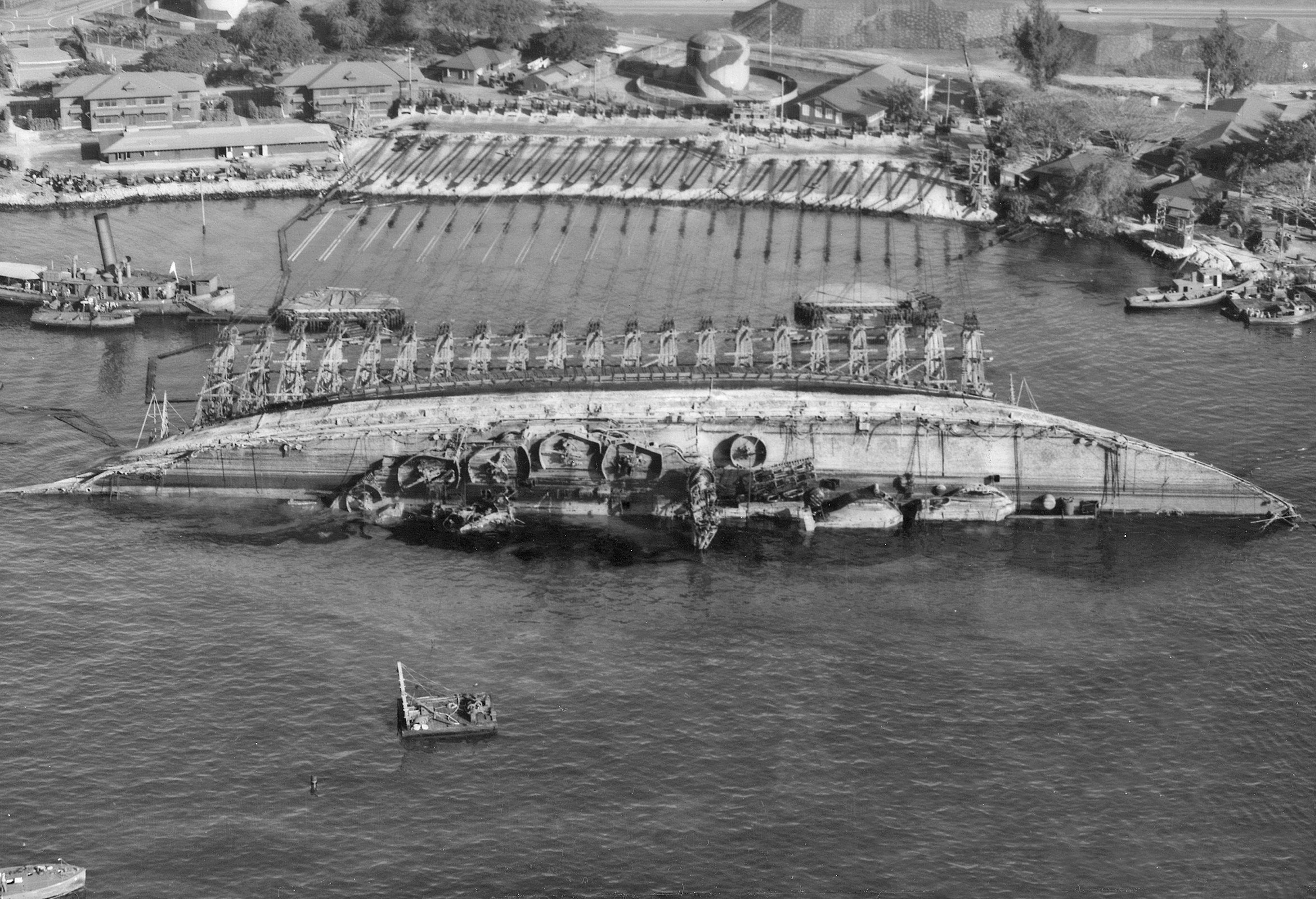Dark Alley Dan
CGN Ultra frequent flyer
- Location
- Darkest Edmonton
That is some serious old-school engineering know-how right there.

When folks talk about "American can-do-attitude", this is the sort of thing they're talking about.
Preparations for righting the overturned hull took under eight months to complete. Twenty-one derricks were attached to the upturned hull; each carried high-tensile steel cables that were connected to hydraulic winching machines ashore. The righting (parbuckling) operation began on 8 March and was completed by 16 June 1943. Teams of naval specialists then entered the previously submerged ship to remove any additional human remains. Cofferdams were then placed around the hull to allow basic repairs to be undertaken so that the ship could be refloated; this work was completed by November. On 28 December, Oklahoma was towed into dry dock No. 2 at the Pearl Harbor Naval Shipyard. Once in the dock, her main guns, machinery, and remaining ammunition and stores were removed. The severest structural damage on the hull was also repaired to make the ship watertight.

When folks talk about "American can-do-attitude", this is the sort of thing they're talking about.






































































